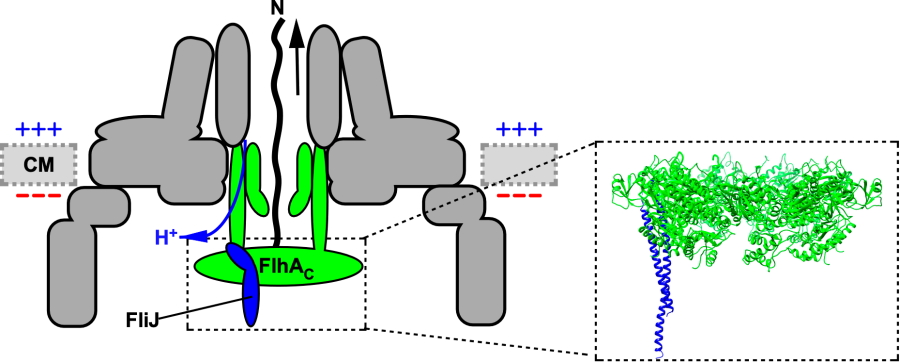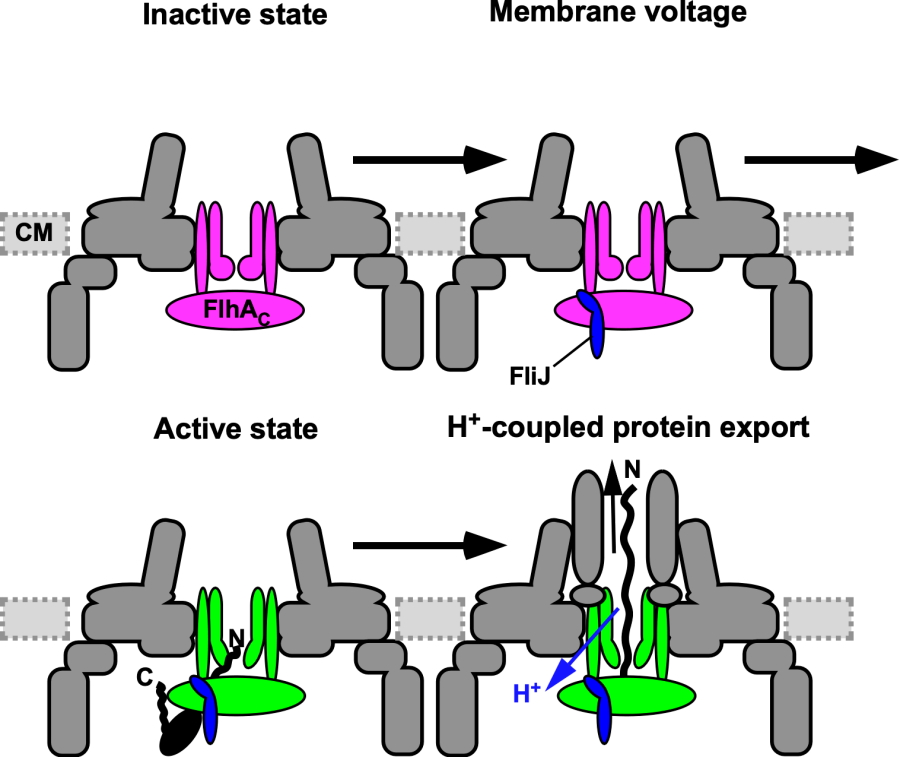Membrane voltage-dependent activation mechanism of the bacterial flagellar protein export apparatus
| Journal | Proc. Natl. Acad. Sci. U. S. A. 118(22):e2026587118 (2021) |
|---|---|
| Title | Membrane voltage-dependent activation mechanism of the bacterial flagellar protein export apparatus |
| Laboratory | JEOL YOKOGUSHI Research Alliance Laboratories〈SA Prof. NAMBA Keiichi〉 |
Abstract
The proton motive force (PMF) consists of the electric potential difference (Δψ), which is measured as membrane voltage, and the proton concentration difference (ΔpH) across the cytoplasmic membrane. The flagellar protein export machinery is composed of a PMF-driven transmembrane export gate complex and a cytoplasmic ATPase ring complex consisting of FliH, FliI, and FliJ. ATP hydrolysis by the FliI ATPase activates the export gate complex to become an active protein transporter utilizing Δψ to drive proton-coupled protein export. An interaction between FliJ and a transmembrane ion channel protein, FlhA, is a critical step for Δψ-driven protein export. To clarify how Δψ is utilized for flagellar protein export, we analyzed the export properties of the export gate complex in the absence of FliH and FliI. The protein transport activity of the export gate complex was very low at external pH 7.0 but increased significantly with an increase in Δψ by an upward shift of external pH from 7.0 to 8.5. This observation suggests that the export gate complex is equipped with a voltage-gated mechanism. An increase in the cytoplasmic level of FliJ and a gain-of-function mutation in FlhA significantly reduced the Δψ dependency of flagellar protein export by the export gate complex. However, deletion of FliJ decreased Δψ-dependent protein export significantly. We propose that Δψ is required for efficient interaction between FliJ and FlhA to open the FlhA ion channel to conduct protons to drive flagellar protein export in a Δψ-dependent manner.

Fig. 1
Schematic diagram of the flagellar protein export channel complex (left) and the structure of the FlhA-FliJ ring complex (right).

Fig. 2
Membrane-voltage dependent activation mechanism.
| Authors | Tohru Minamino (1), Yusuke V Morimoto (2, 3), Miki Kinoshita (1), Keiichi Namba (1, 4, 5, 6)
|
|---|---|
| PubMed | 34035173 |
